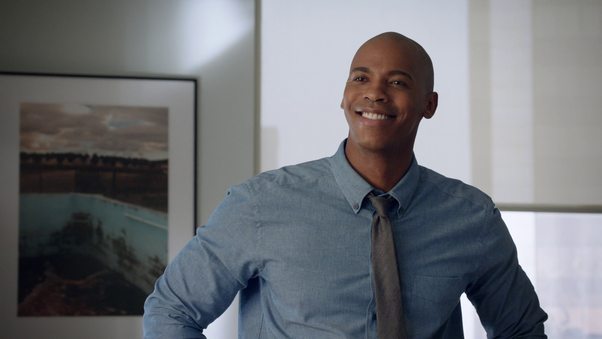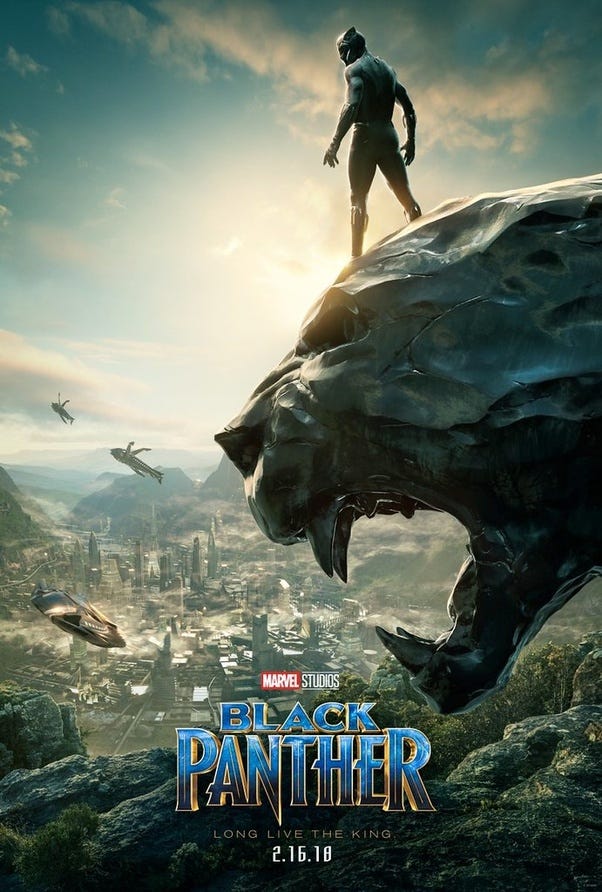Let’s talk about diversity in fiction. Specifically, let’s talk about how much how entertainment companies have been forcing diversity into stories and pandering to certain groups lately.
Companies have been pandering to a vocal part of audiences which wants people from underrepresented groups in more prominent roles in films. These companies make extra effort to cast actors from underrepresented groups and to hire crew members to have creative input.
Many companies, rather than create new characters/stories, have chosen to change existing characters or stories to appeal to this demand.

There are many opportunities to create new characters or tell the stories of existing characters from different backgrounds which are overlooked.


Along with that, these stories are often about the character not being a straight white man. They aren’t films which just happened to feature a character who isn’t a straight white male, they include themes about the characters’ characteristics.
What is something that needs to be said?
Pandering is not new. Every company, in every industry which has ever tried to sell something has pandered to their target audience. Entertainment companies have just shifted the audience which they target.
Many people who complain about “forced diversity” are really just complaining about diversity and they seem to have higher standards for stories with a character who isn’t a white man. That isn’t to say that the way a story includes diversity always makes sense, but that is not usually what is criticized because those types of situations aren’t as common.
In fact, for much of the history of American entertainment, “forced white maleness” has been a much larger problem. It seems that many films and moviegoers treat white men as the default.
People who criticize “forced diversity” also seem to never mention that a character is white and male in their criticisms of films with white leads. It seems, if a movie has a protagonist who is a white man, then any problems are due to directing, writing, acting, etc. If the film has a character who isn’t a white man, then its problems are because of “forced diversity” and having an agenda.
Some people complain that rather than tell good stories, companies now have an agenda, which is true. They have an agenda, but not a “liberal” or “social justice warrior” agenda, the only agenda they have is to make money.
Note that I am not referring to individuals. A director, for example, may hold liberal views and those views may influence creative decisions. But individual filmmakers have to answer to executives who are often more concerned with how the product is going to make money, and those executives may change or embrace those decisions, depending on how they assesses the appeal of the product.
For a long period of time, entertainment companies pandered to white Americans who didn’t want to see positive or nuanced portrayals of non-whites. Women were also been portrayed in stereotypical roles. It was politically correct to negatively stereotype these groups.
Recently, companies have realized that those types of portrayals no longer appeal to audiences. They may also elicit vocal criticism which may impact the product’s performance. Companies assess that, and then decided to portray women and non-whites in positive or non-stereotypical roles.
I find that a large percentage of people, including those who complain about “forced diversity,” are fine with that. There are, of course, some people who think any inclusion of characters who are not male or white is identity politics and because of SJWs, and that diversity is bad or “forced.” For example:[1]
“’Solo: A Star Wars Story’ made just $83 million over the weekend, an absolute a failure by Star Wars standards. Disney publicists will chock it up to competition from ‘Deadpool 2’ or franchise fatigue, but they won’t admit that Social Justice Warrior (SJW) politics are to blame.
Lucasfilm President Kathleen Kennedy has been systematically injecting feminist identity politics into Star Wars to its detriment. She refuses to cater to male fans in the historically male franchise. She put a female lead character in ‘The Force Awakens,’ ‘Rogue One’ and ‘The Last Jedi.’ She’s mandating more female creators. And she’s famously adopted the sexist phrase, ‘The Force is female.’”
— Jared Whitley, Daily Caller contributor
After reading this article, it seems to me like Jared Whitley is against having female lead characters in Star Wars films. Similar comments can be found about Finn and Poe, because they are not white. Whitely also seems to have a problem with female filmmakers working on the films.
There are a few solutions companies have come up with to diversify their content which are not the best. Mainly, they change the character. I agree with people who criticize this method, because their argument is that rather than change characters, effort should be made to make new characters or utilizing existing characters who are from underrepresented groups.
For example, comic book companies have quite a few characters from underrepresented groups who have never been given motion picture adaptations, yet rather than using those characters some film studios choose to change characters in adaptations. An example is James Olsen in the 2015 television adaptation “Supergirl.”
Batman and Superman adaptations
By far, DC has made more movies and television shows about Batman and Superman or characters related to them than any other character. It’s easy to see why, Superman and Batman are some of the most popular fictional characters ever created. They sell, so DC keeps making products with those characters.
To get an idea of just how many motion picture adaptations Batman and Superman are featured in, I looked at DC Comics’ respective lists for TV shows (72 total) and movies (104 total). These numbers may not be completely accurate, since I quickly filtered the results using characters which I recognize as being related to either character. Also, there may be some adaptations not listed on this site, but these numbers should still give a basic idea of just how many adaptations Batman and Superman have been in.
Batman or related characters are featured in 34 television shows and 69 movies. Of 34 television shows, Batman is the main protagonist of about 10. Of 69 movies, about 35 feature Batman as the main protagonist.
Superman and related characters are featured in 34 television shows and 47 movies. This is including the 2005 “Krypto The Superdog” animated series. Of 34 television shows, Superman is the protagonist of about 11. Of 47 movies, Superman is the main protagonist of about 17 of them.
In my count for media which qualify either character being a main protagonist, I mainly included those which have either Batman or Superman in the title, so I included ones like the 2009 animated film “Superman/Batman: Public Enemies” and 2010’s “Superman/Shazam!: The Return Of The Black Adam” but excluded media about the Justice League or other larger teams.
For some other Batman and Superman related characters, Supergirl appears in eight television shows, of which only the 2015 series “Supergirl” features her as the main protagonist. Nine movies are listed for her, of which she is the protagonist only in the 1984 film “Supergirl.”
Batwoman is featured only the 2019 series “Batwoman” and the crossovers with other CW shows. She is featured in three animated films, all of which feature Batman as the protagonist.
I also decided to look at Bruce Wayne’s butler, Alfred Pennyworth.
Alfred Pennyworth is featured in 16 television shows and 36 movies. No movies feature him as a main protagonist, but DC released a new live action television show featuring him; the first season ended Sept. 29.[2]
Other DC characters
Now, I will compare this to the numbers for the third member of DC’s Trinity, Wonder Woman.
Wonder Woman is featured in 16 television shows. Of which, only two are non-team focused. Wonder Woman is featured in 31 movies, of which she has only two movies, one live action and one animated, where she is the sole protagonist.
Looking at some of DC’s most popular black characters, Cyborg is featured in six television shows and 21 movies, none of which are solo adaptations.
Green Lantern is featured in 14 television shows and 21 movies, none of which feature John Stewart as the main protagonist, though he had a prominent role in at least one Justice League adaptation of which I’m aware.
There is also Vixen, who has a short animated television series on CW Seed, and became a main character on “Legends of Tomorrow.” She was also featured in a few of the other CW live action shows and some episodes of the animated series “Justice League.” The only movie listed is a movie version of the five-minute episodes of her CW Seed series.
I don’t see a filter option for Virgil Hawkins, who is Static, but I know he was the protagonist of the 2000 animated series “Static Shock.” He also has been featured in episodes of some other animated shows such as “Young Justice.” He is not featured in any films, but he does have a cameo in an animated film.
Looking at this, Batman’s butler has more adaptations than most of DC’s black and female characters, including Wonder Woman, who is by far DC’s most popular female character. Superman’s dog got his own television series before John Stewart, Cyborg, Black Canary and many other characters.
DC Films seems to be trying to include more characters which are originally from underrepresented groups in the comics. Films like “Birds of Prey,” “Batgirl,” “Green Lantern Corps” and “Cyborg” are in development. But of course, there are also respective Batman and Superman films in development as well.
For years, DC has failed to pursue opportunities to utilize its diverse roster of characters in motion picture adaptations because DC has been unwilling to take chances on characters who aren’t Batman or Superman, or who aren’t closely related to those characters.
Other entertainment companies have operated in similar ways, and this has resulted in a majority of media, especially motion pictures, to have much more representation for white male characters than others.
Conclusion
Yes, entertainment companies pander to audiences. They pander to audiences who want more diverse characters and also to people who don’t want as diverse audiences. Companies want to appeal to audiences in an attempt to make as much money as possible, which is nothing new.
Entertainment companies have tried many things to launch media for characters from underrepresented groups and some attempts have not been as successful. Attempts to criticize “forced diversity” often come off as having higher standards for diverse stories and not as criticizing writing or the product itself. There are, however, some valid criticisms of the way a story includes diversity.
Footnotes
[1] SJW Politics Have Handed Star Wars Its First Bomb With ‘Solo’
[2] Pennyworth (2019 — Present)
Originally published on Quora. View the rest of my posts on my profile.
Comments
Post a Comment